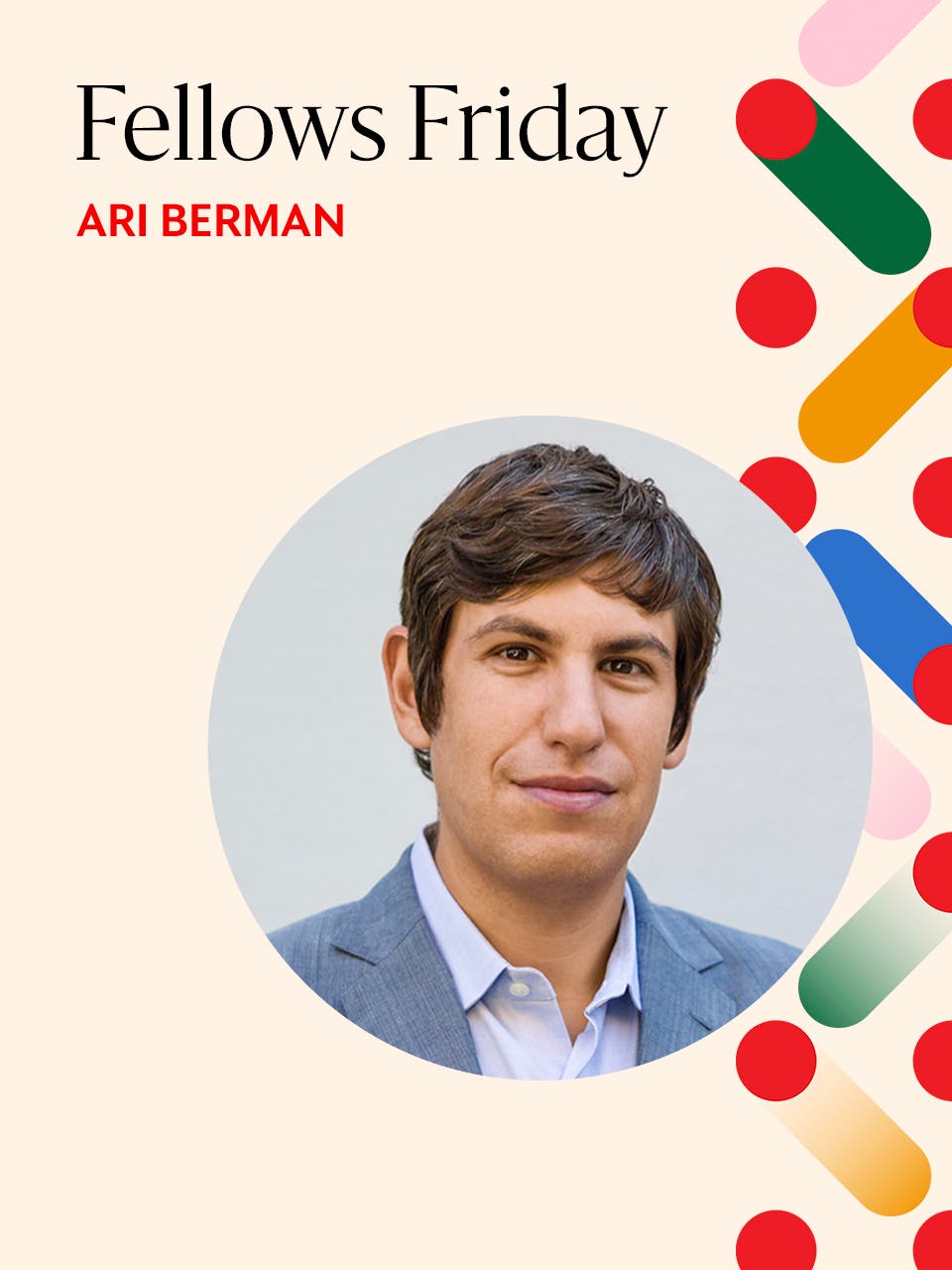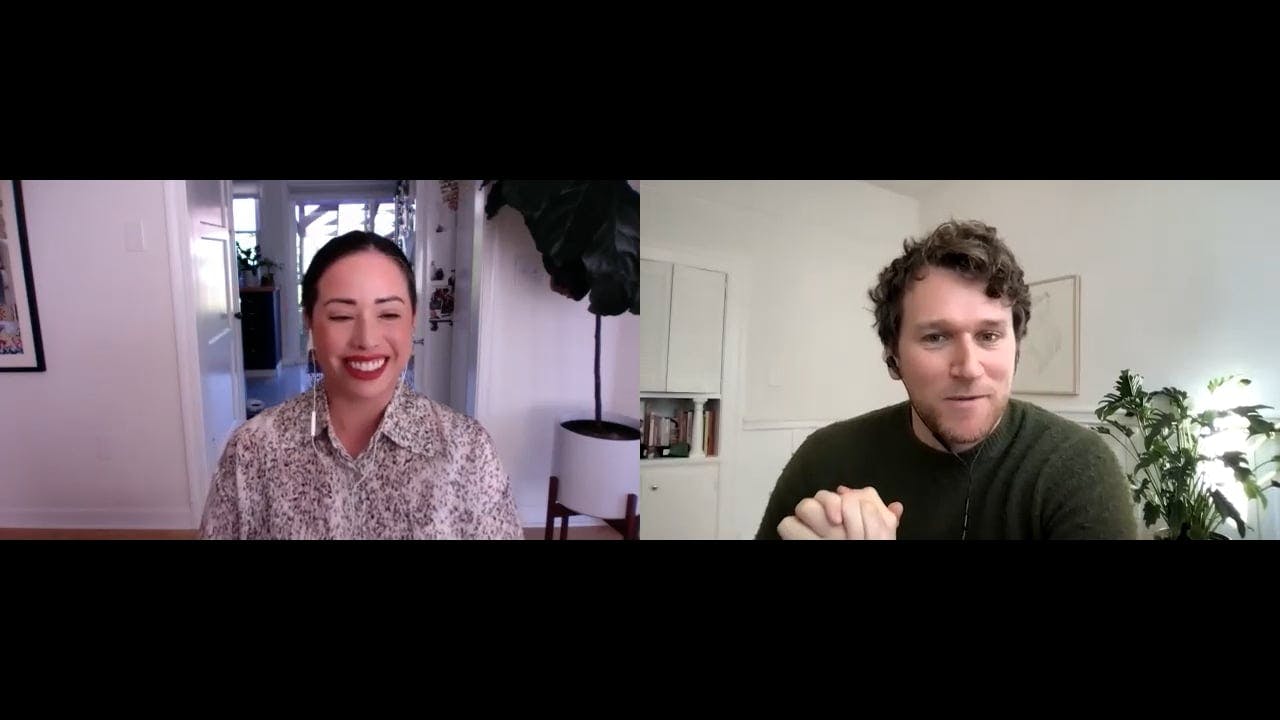
Voting is political. Voting rights shouldn't be.
57 min watch

During graduate school at UCLA, when artist and Emerson Collective Fellow Wendy Red Star found herself feeling homesick for the Apsáalooke community in which she grew up, she decided to visit a natural history museum in Los Angeles where she knew she could view a collection of Native American artifacts. But when she saw pieces of her culture on display, instead of feeling at home, she saw all the ways her community has been misrepresented and overlooked. It was the first time she found herself critiquing one of the institutions that perpetuate much of the common knowledge of Native people in the U.S., questioning how it presented her culture’s objects and stories.
The trip to the museum eventually led to the creation of her self-portrait piece “Four Seasons.” Such is the way Red Star’s artistic process has unfolded throughout her career: as she learns more about her own culture, and how it has been manipulated and depicted, she utilizes this knowledge to recast historical narratives with a feminist, Indigenous perspective. Her expansive body of work includes photography, textiles, bead work, collage, archival and site-specific installations, evolving into new shapes and forms with each new idea.
We were joined in conversation by Red Star on the occasion of her first monograph, Delegation, which includes an array of her photo-based work from 2006 to present, as well as essays, stories, and poems that showcase her nuanced artistic vision. Here, in conversation with Emerson’s Fellowships & Portfolio Communications Director Patrick D’Arcy, she shares that vision with us.
I grew up on the Crow Indian Reservation in Montana, which is located near the Wyoming border. My mom is white, my dad is Crow. Living and growing up on the reservation and participating in the culture really shaped who I am and the work that I make. I grew up knowing that I was Crow, and that was just normal. When something's normal to you, you don't really ask a lot of questions. You're just living and being it. Then I went to public school in Harden, which used to be part of our reservation. The community there was a mixture of Crow kids, white kids, and mixed kids like myself. In Harden the only time that I remember us ever talking about Native people was around Thanksgiving. We talked a lot about Columbus. Back then, which wasn't that long ago, Columbus was celebrated. Really, there really wasn't any talk about Native people in history, let alone the Crow community.
At Bozeman I decided to take some Native Studies classes, where I learned about why there were reservations and allotments. That made me want to know specifically about the Crow community, and our history with the U.S. government.
I found a chief named Sits in the Middle of the Land, who also goes by Blackfoot. He was the first chief that was asked to find the boundaries of our territory. What he said was, "My home is where my tipi sits." He mapped out over 38 million acres, and he rested each of the four poles on different seasonal camping sites.
I realized that Bozeman, where I was going to school, was Crow territory, and it blew my mind. I had no idea. So I got very excited. I asked my dad if he would help me harvest lodge poles on a reservation. Then I started putting them around campus. They soon got knocked down. And then I would set them up again. And then, the next day, they'd be knocked down. And I realized that it was starting to feel intentional.
I decided I would end the project by sneaking into the football stadium and putting the last piece on the 50 yard line. And there was this giant prop football helmet on campus, so I pulled it out and took a photo. This is a very sacred territory for the U.S., when you think about football, and sports—it’s a piece of territory that people go insane after.
Travels Pretty was funded through the Public Art Fund, which has a bus shelter initiative with 300 bus shelters—artists create artwork for the bus shelters. I was tasked to think about New York, Chicago, and Boston. I looked at the cultural institutions within each of those cities that held Native American collections, specifically Crow collections. Each of those collections had these rawhide carrying cases called parfleches. They were utilitarian. You could put meat in them, personal items, clothing, sacred items. They were widely traded between northern Plains communities all the way up into the west coast.
I thought these were perfect for bus shelters because bus shelters are about traveling. I made 12 paintings of parfleches that are shown on the bus shelters, and wrote short pieces to accompany each one with different things that I learned about the parfleche. When you are at a bus shelter, each parfleche you encounter has different information.
Let me take you back to 25-year-old Wendy. She's a graduate student at UCLA, and she's learning about institutional critique. I decided one day that I was really missing home and wanting to see home. And I thought, "I bet if I go to the Natural History Museum, I'll see something that's Crow."
When I got there I looked around and I realized: we're being set up to think of Native people as nonexistent and frozen in this time period and displayed in this way. It was the first time that I ever walked into an institution and had some critical thought. I wasn't just spoon feeding from what the institution was offering. I decided I would create my own dioramas based on the four seasons, wearing my traditional outfit that I had in my closet at the time. And so the “Four Seasons” was born. I was trying to convey the complicated feelings that I was having about the way that institutions have displayed Native people and Native material culture.
The American galleries at the Seattle Art Museum decided that they were going to redo the way they think about American art. They brought in artists to help them rethink the objects and the collection, including me. I feel like I haven't really engaged with American art in museum collections, and one of the reasons why is because I don't really see myself in there. What I pitched to them was that I would make a call to the Native women and children that were living in the Seattle area, and I would take portraits of them. I hired a Native woman photographer who is based out of Seattle. All these amazing women and children came and we photographed them.
The opening for this piece was probably one of the best opening experiences I’ve had. To have that many of the sitters come and be so delighted! To see children be so excited to see themselves! It's called the People of the Earth, which is the literal translation of how you would say “Native people” in Crow: people of the earth.
I feel like the art that I'm making is my learning journey, and my audience is on that learning journey as well. Sometimes my professors or visiting artists would feel a little bit stumped when they would want to do a studio visit with me because they lacked any knowledge about Native history. But actually, you're not supposed to know about Native history. It's been designed that way. Ever since settlers came over, the goal was to occupy the land. To do that, you had to annihilate Native people or assimilate them and erase them from history. So I try to remind people that when they feel bad about their lack of knowledge, it truly was set up that way.